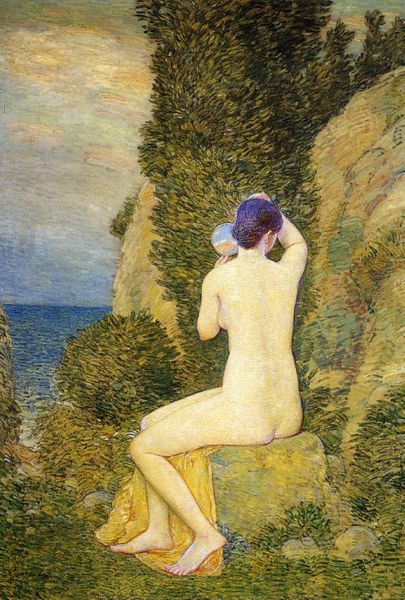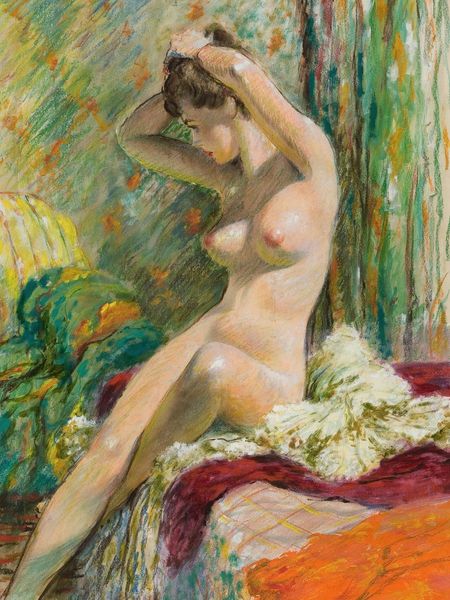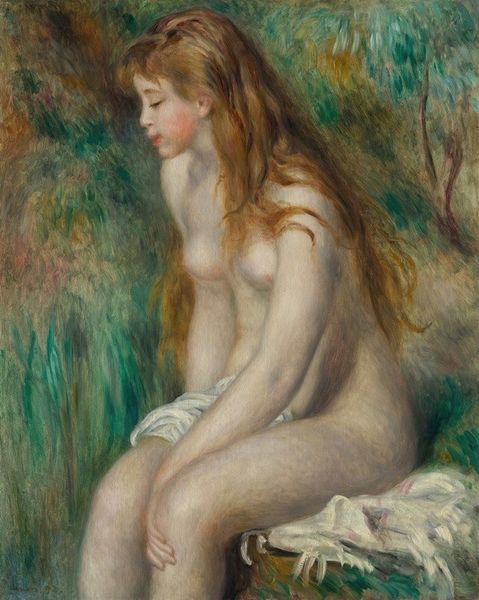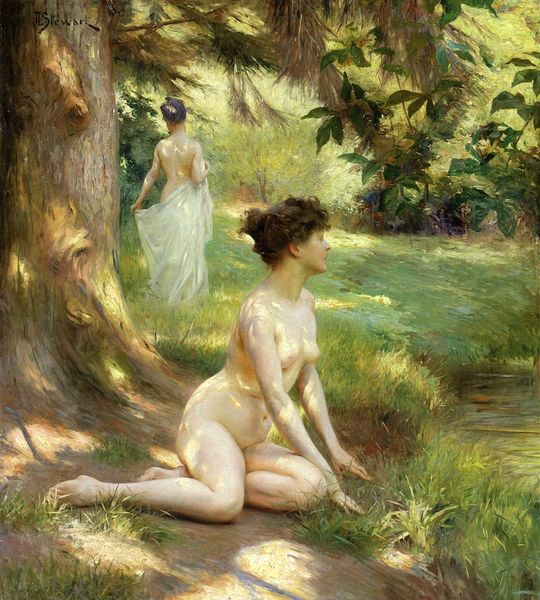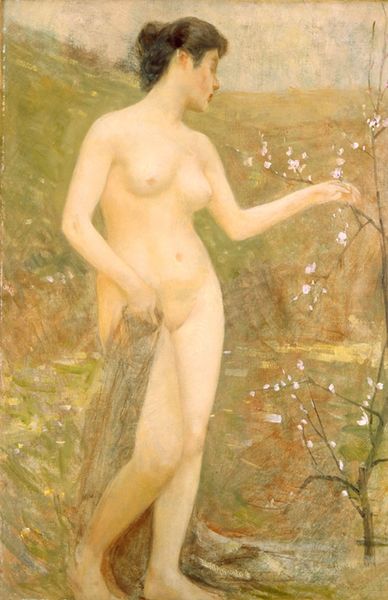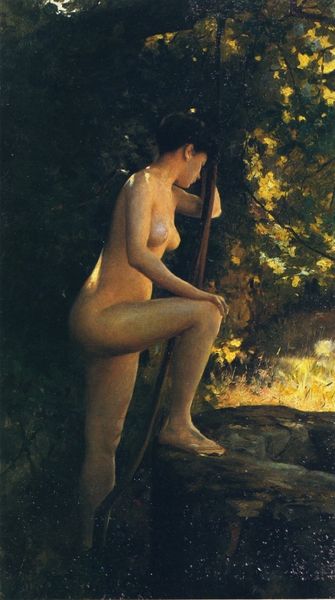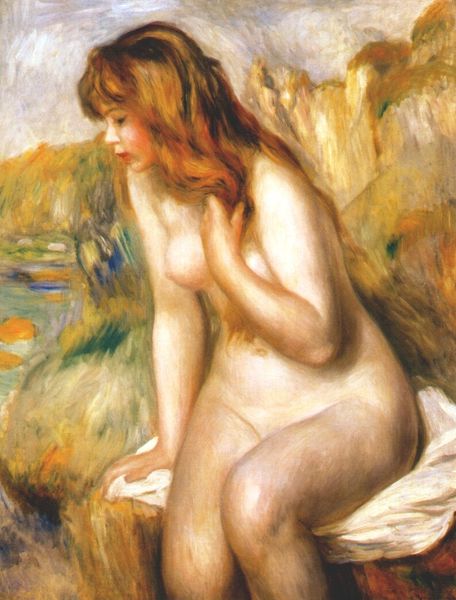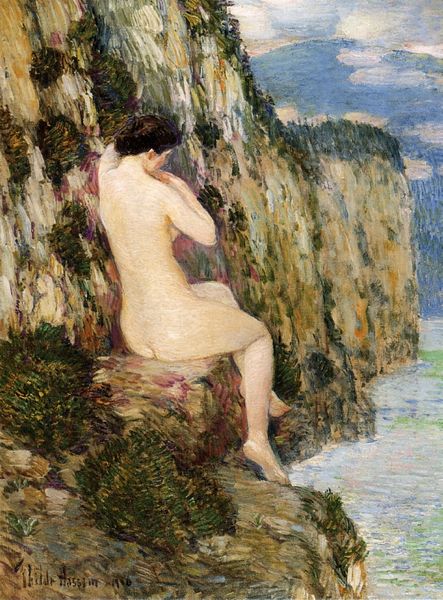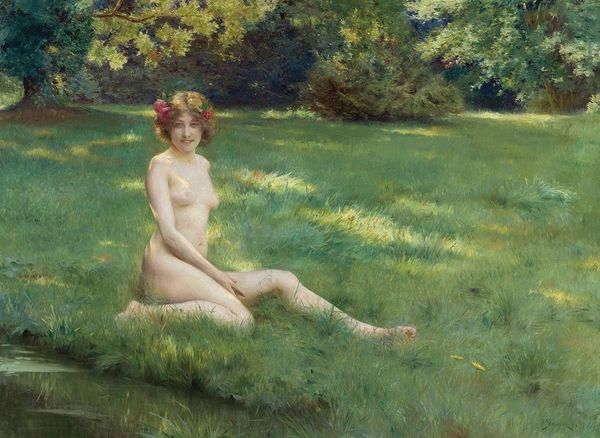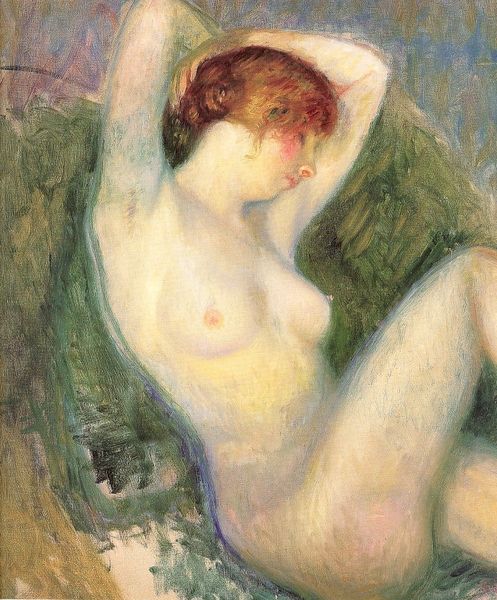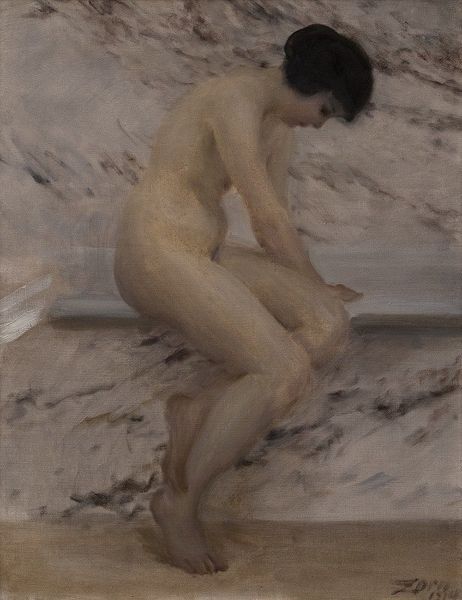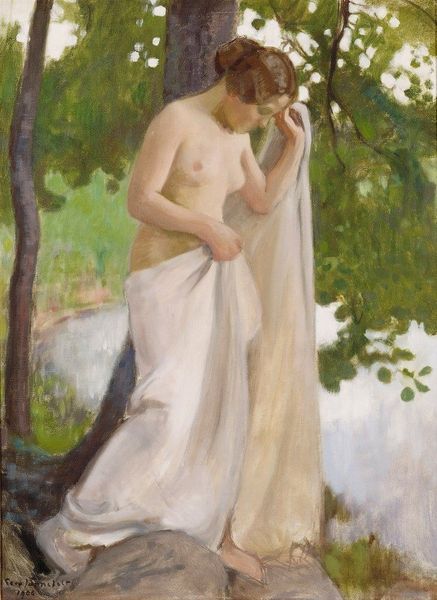
Dimensions: overall: 61 x 55.9 cm (24 x 22 in.) framed: 85.4 x 80.3 x 7.6 cm (33 5/8 x 31 5/8 x 3 in.)
Copyright: National Gallery of Art: CC0 1.0
Editor: This is "Nude Seated," an oil painting by Childe Hassam from 1912. I’m struck by how the dappled light seems to almost dissolve the figure into the background. What catches your eye in this piece? Curator: The way Hassam uses oil paint interests me. Look at the texture, how he builds up layers, almost like weaving different threads of pigment. The material itself becomes a focal point. We need to consider how easily available and thus comparatively cheap oil paint became at this time, altering how and who was painting. Editor: I hadn't thought about it that way, focusing on the paint itself. I was too caught up in trying to understand the pose. Curator: Consider also the social context. Intimist nudes became more popular. What was it about this period that created an audience, a market, for images like this? Were these intended to be consumed only by certain demographics? Did that affect the process? Editor: That makes me think about who owned paintings like this, and what role gender played in the consumption and even creation of the work. I wonder if the Impressionist style was connected to specific materials as well. Curator: Precisely! Were new pigments becoming available, leading to brighter colors? Was mass-produced canvas affordable, allowing a new generation of artists to explore? Thinking about these things anchors our experience. Editor: That is very helpful. Now, when I look at the painting, I think about the canvas and pigment, the societal and economic elements affecting what was painted and who had access to it. Curator: Seeing art through the lens of production and consumption certainly adds a layer of understanding.
Comments
No comments
Be the first to comment and join the conversation on the ultimate creative platform.
